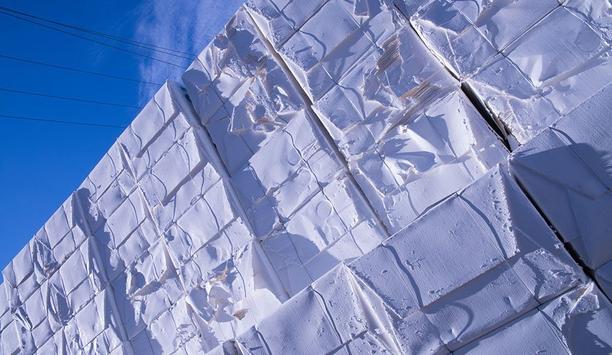There is a lot of studies and authority actions to have better responses after a natural disaster, including risk management, awareness, and preparedness especially in areas where there is a higher probability or risk of a disaster occurring.
Lack of risk management policies
There are countries around the world with strong policies and high investment in risk management, nevertheless, fire protection of buildings, critical infrastructure, industrial sites, and key parts of the supply chain of food and medicine is often overlooked when the authorities shape these risks management policies and plans.
There are several documented cases around the world of large fires starting immediately after a major earthquake, for example following the Great San Francisco earthquake of 1906 the city burned for three days.
Fire cases after a natural disaster
In 1989, four buildings were destroyed by a fire caused by a ruptured gas line due to the Loma Prieta Earthquake. In this event, the hydrant systems failed to impair the ability of fire brigades to control the fires.
In Japan, after the earthquake in April of 2011, a fire destroyed the Ichihara Oil Refinery and was controlled after 10 days, putting the communities around at risk and releasing toxic smoke into the air during all that time. The Fukushima area and the Daiichi Sankyo Onahama gas plant suffered dangerous fires as well.
Recently, after the hurricane, Ida's six homes were burned in the community of Barataria in Louisiana, United States. I considered this a notable case because the fire brigades couldn’t reach the area. After all, the bridge that connected the main road to this community was affected by the water floods.
Fire Risks in Buildings after a Natural Disaster
Usually, we link these risks to wildfires, but there is a high possibility that structural fires occur due to ruptured gas lines, arcing electrical wires, or even unattended candles that can be potential sources of ignition and destroy buildings, affect industrial sites or critical infrastructure and have adverse effects to the communities around, already highly affected by the disaster itself.
Earthquakes, flooding, and landslides might block access to fire brigades impairing the ability to respond to these fires
Earthquakes, flooding, and landslides might block access to fire brigades and affect water supplies impairing the ability of a city to respond to these fires increasing the risk of these fires propagating to the nearby structures.
After the Northridge earthquake in Los Angeles, in 1994 Los Angeles firefighters responded to around 110 earthquake-related fires. Main water pipes ruptured, making the firefighters draft water from swimming pools and limited water tankers available.
Causes of increased response time
When an earthquake occurs usually extensive structural damages occur, fire-rated constructions might fail to increase the possibility of fires propagating inside the structure. Sprinkler systems can be affected even though most laws and regulations around the world require that sprinkler pipes are designed to withstand the effect of an earthquake.
Also, electrical circuits inside a building can fail to cause arcs that might produce ignitions, power outages and broken wiring might affect the operation of fire detection systems as well, which means the time to respond is severely increased.
Fire and rescue emergencies
External conditions like the wind or the presence of certain materials can aid the fire to spread before firefighting brigades arrive, and it is important to consider that after a natural disaster there are several different types of emergencies that fire and rescue departments need to respond to in parallel.
Most countries around the world have enforced seismic codes over years, following devastating earthquakes like Haiti and Chile in 2010 these codes have been updated but there is a long way to bring the fire protection mentality embedded in risk management and resiliency plans of cities and communities.
What to do?
Risk management methods need to be developed to identify the most effective measures to increase the resistance capacity
Usually, fire protection codes and regulations address fires as isolated events occurring inside a structure and they are designed to minimize the spread of fire within the building.
Some like the sprinkler design and installation guidelines do include seismic protections but risk management methods still need to be developed to identify the most effective measures to increase the resistant capacity of infrastructure.
The design of risk management policies and resiliency plans should have a fire protection component with three main objectives:
- Life Safety: Impairment of life safety and loss of incoming lifeline services should not create unacceptable life safety hazards for the continued occupation of a building.
- Property Damage: Loss of incoming lifeline services should not result in an unacceptable fire growth situation which could rapidly outstrip the ability to contain a fire
- Fire Spread: Loss of incoming lifeline services should not result in an unacceptable level of risk of fire spread to adjacent buildings beyond the ability of firefighting.
Installation and maintenance fire detection systems
One component to this scheme of protection after natural disasters is the use of technology to prevent and detect the risk of fire, following the recommendations of worldwide recognized guidelines such as the NFPA 72, EN54, or ISO 7240 among others, but as I have mentioned before these guidelines address fires as isolated events, the next step should not only include fire protection as an integral part of building codes but to include these measures as an integral part of risk management and resiliency plans.
Not only installation of fire detection systems should be enforced but in addition, regular maintenance must be highly relevant in the local codes in cities where there are higher risks of natural disasters. Ensuring proper evacuation procedures in place supported by clear messages using a Public Address system with full coverage is an important measure as well.
fire protection measures
Fire-resistant designs aim to limit the impact of the fire and maintain a significant level of functionality
Additional technologies like seismic shut-off valves to cut gas and flammable liquids and prevent fires due to leaks in ruptured pipes should be implemented in these contexts in addition to the existing fire protection measures.
Building codes have a strong focus on fire-rated construction and the use of fire stoppings on all vertical and horizontal openings, but when the structure fails there is the possibility of this protection failing as well. Fire-resistant designs aim to limit the impact of the fire and maintain a significant level of functionality afterward.
Risk management plans
In cities with higher risks of natural disasters such as earthquakes, urban zoning should be considered when construction licenses for industrial sites and chemical plants are issued and the location of these types of buildings is being planned.
Also, authorities should maintain constant communication and collaboration with the managers of these facilities to include their emergency plans into the general risk management plans of the city. Fire load management is key in these environments.
Evaluating codes for urban planning
As I mentioned before, water supply for fire brigades and water access can be impaired when a natural disaster occurs, this means not only the sprinkler system should be functional after the event but also larger water reservoirs than the regularly prescribed by existing laws should be available in places such as industrial or chemical plants.
Detailed data and documentation of the most probable causes for ignition after an earthquake should be systematically documented to provide authorities information for urban planning and evaluation of existing codes and risk management plans.
Trends for the Future
IoT and cloud-based services for fire protection equipment open possibilities to address the challenges of fire protection
The adoption of the internet of things and cloud-based services for fire protection equipment opens a world of possibilities to address the challenges of fire protection linked to structure design and response to natural disasters. In the future, we could have IoT-enabled smoke detectors that allow systems to provide indoor geolocation and intelligent evacuation.
Right now, there are companies implementing integration between earthquake detection and fire alarm panels, this could potentially lead to protection schemes seamlessly integrated.
Creating a database
Authorities can use data of the existing facilities in a city, like high rise buildings, industrial sites, chemical plants, transportation and critical infrastructure, warehouses, food and medicine supply chain, hospitals among others to create real-time fire risk maps, collaborate with the managers of these facilities and create a database for fire departments and risk management plans.
Cloud-based technologies could allow real-time data fed to these plans to analyze the behavior of people and structures during and after a disaster, and ultimately design smarter and safer buildings and cities.





















